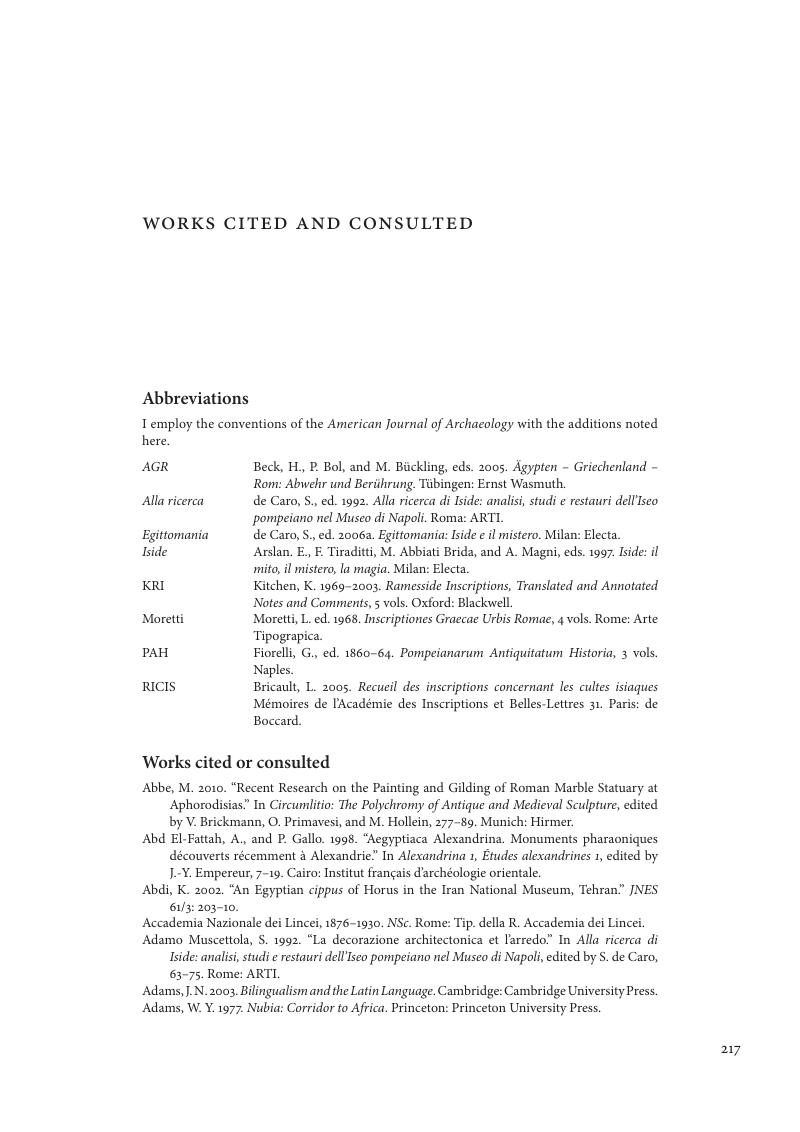Book contents
- Half title page
- Frontispiece
- Title page
- Copyright page
- Contents
- Contents
- Contents
- Book part
- Introduction: From Egypt to Italy
- 1 Egyptian Objects, Roman Contexts: Appropriation and Aesthetics
- 2 Aegyptus Redacta: Augustus’ Obelisks and the Spoils of Egypt
- 3 The Sanctuary of Isis in Pompeii: Dedication and Devotion, Myth and Ritual
- 4 Images of Egypt: Land at the Limit of Belief
- Conclusion: The Afterlives of Objects
- Notes
- Bibliography
- Index
- References
Bibliography
Published online by Cambridge University Press: 05 April 2015
- Half title page
- Frontispiece
- Title page
- Copyright page
- Contents
- Contents
- Contents
- Book part
- Introduction: From Egypt to Italy
- 1 Egyptian Objects, Roman Contexts: Appropriation and Aesthetics
- 2 Aegyptus Redacta: Augustus’ Obelisks and the Spoils of Egypt
- 3 The Sanctuary of Isis in Pompeii: Dedication and Devotion, Myth and Ritual
- 4 Images of Egypt: Land at the Limit of Belief
- Conclusion: The Afterlives of Objects
- Notes
- Bibliography
- Index
- References
Summary

- Type
- Chapter
- Information
- Egypt in ItalyVisions of Egypt in Roman Imperial Culture, pp. 217 - 246Publisher: Cambridge University PressPrint publication year: 2015



